Conservation is the management, protection, and wise use of natural resources. Natural resources include all the things that help support life, such as sunlight, water, soil, and minerals. Plants and animals are also natural resources.
Earth has limited supplies of many natural resources. Our use of these resources keeps increasing as the population grows and our standard of living rises. Conservationists work to ensure that the environment can continue to provide for human needs. Without conservation, most of Earth’s resources would be wasted, degraded, or destroyed.
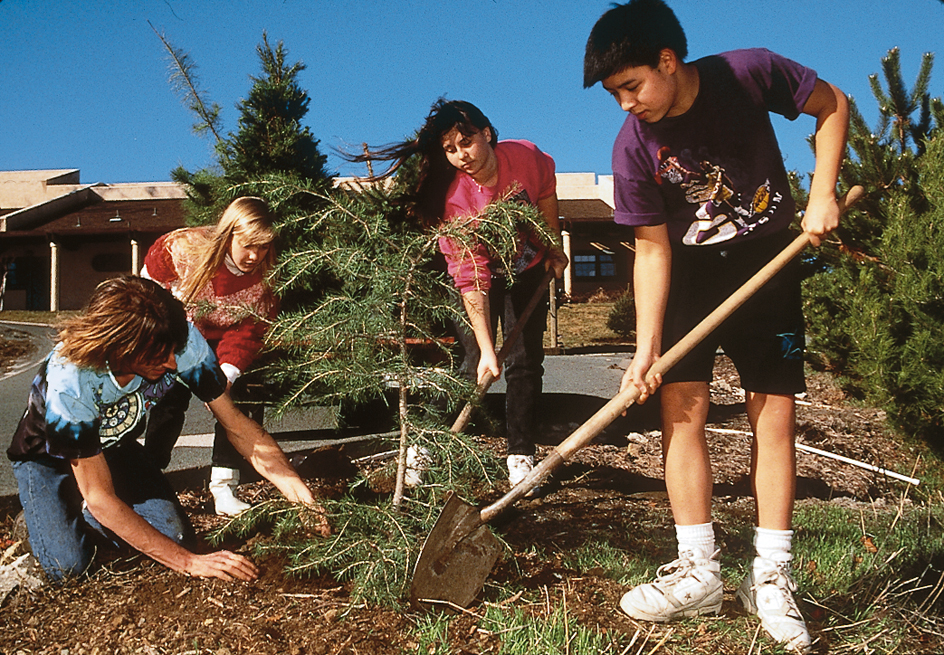
Conservation includes a wide variety of activities. Conservationists work to keep farmlands productive. They manage forests to supply timber, to shelter wildlife, and to provide people with recreational opportunities. They work to save wilderness areas and wildlife from human destruction. They try to find ways to develop and use mineral resources without damaging the environment. Conservationists also seek safe, dependable ways to help meet the world’s energy needs. In addition, they work to improve city life by seeking solutions to air pollution, waste disposal, and urban decay.
Conservationists sometimes divide natural resources into four groups: (1) inexhaustible resources, (2) renewable resources, (3) nonrenewable resources, and (4) recyclable resources.
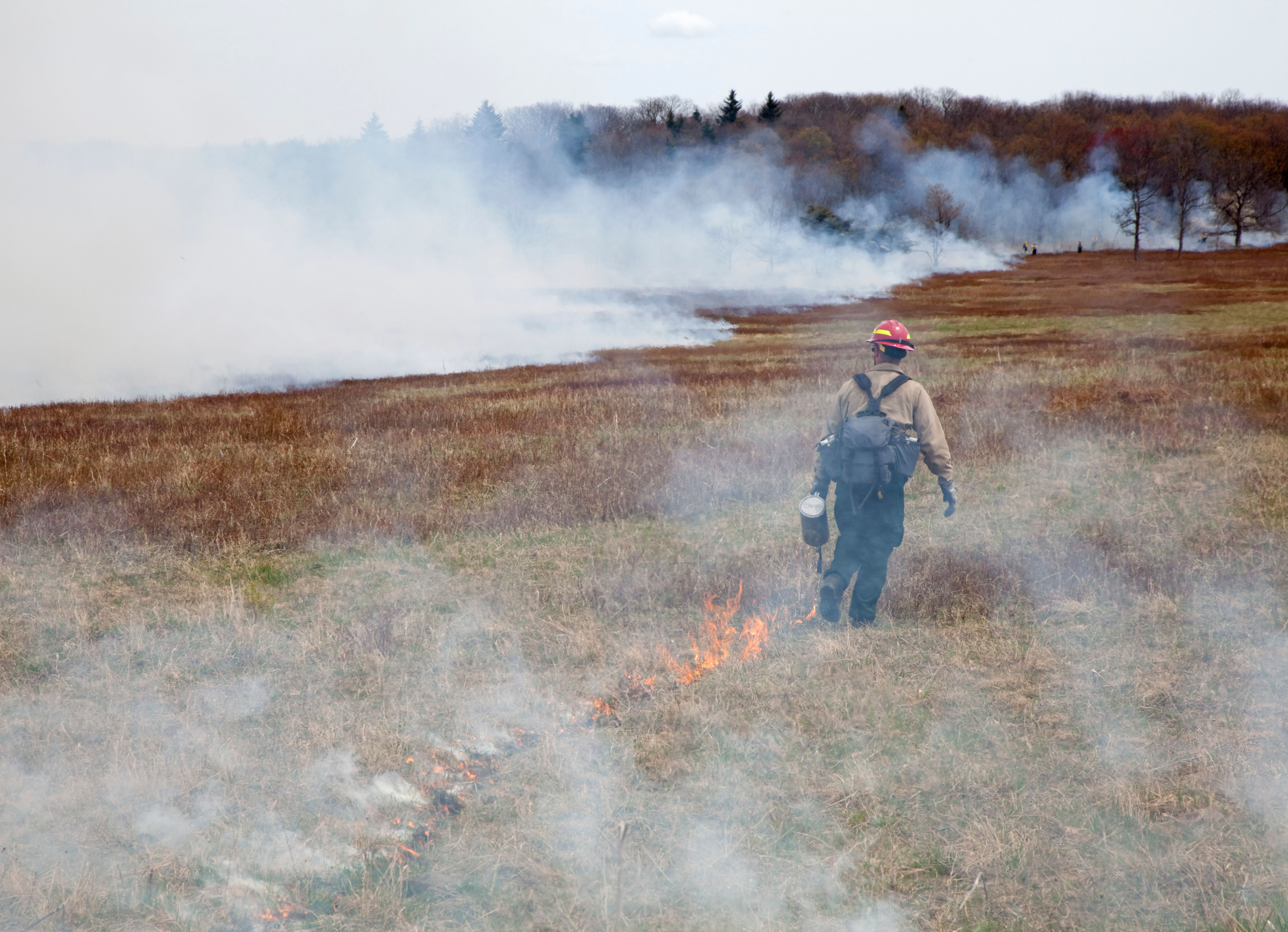
Inexhaustible resources, such as sunlight, cannot be used up. Conservation experts consider water an inexhaustible resource because Earth will always have the same amount of water. But water supplies vary from one area to another, and some areas have shortages of clean, fresh water. The supplies of salt and some other minerals are so abundant that they are not likely to be used up.
Renewable resources can be used and replaced. They include plants and animals, which reproduce and so replace themselves. Most renewable resources cannot be stored for future use. For example, old trees rot and become useless for timber if they are not cut down, though rotting trees can serve such important purposes as providing habitat for wildlife. In addition, because most renewable resources are living things, they interact with one another. Thus, the use of one such resource affects others. For example, cutting down trees affects many plants and animals, as well as soil and water resources. Soil may be considered a renewable resource because crops can be grown on the same land for years if the soil is cared for properly. But if the soil is allowed to wash or blow away, it can only be replaced over hundreds of years.
Nonrenewable resources, such as coal, iron, and petroleum, cannot be replaced. They take thousands or millions of years to form. People deplete supplies of these resources faster than new supplies can form. We can store most nonrenewable resources for future use. Mining companies sometimes leave minerals in the ground to save them for the future. Little interaction occurs among most nonrenewable resources, so using one nonrenewable resource has little effect on another.
Recyclable resources, such as aluminum and copper, can be used more than once. For example, aluminum can be used to make containers and then be reprocessed and reused.
People have practiced some kinds of conservation for hundreds of years. As a popular movement, however, conservation began in the United States during the early 1900’s. The word conservation was probably first used by Gifford Pinchot, head of the U.S. Forest Service during President Theodore Roosevelt’s administration. The term comes from two Latin words—servare, which means to keep or to guard, and con, which means together. During the early 1900’s, American conservationists worked chiefly to preserve the nation’s forests and wildlife. Today, conservationists work in many fields, including forestry, geology, range ecology, soil science, wildlife biology, and urban planning. Conservationists are also called environmentalists.
One of the most difficult challenges of conservation is to reconcile two, sometimes conflicting, goals—(1) to protect the environment and (2) to maintain or increase agricultural and industrial production. For example, the agricultural use of some chemical fertilizers and pesticides pollutes the environment but also greatly increases crop yields. Thus, most farmers do not want to stop using these chemicals, even though it would be best for the environment. Only the combined efforts of many people can solve such problems. Business leaders, government officials, scientists, and individuals must all work together to conserve natural resources.
The importance of conservation
Conservation is important for many reasons. Farmers may practice conservation to prevent erosion and to maintain the quality of the soil. City dwellers may be chiefly concerned about air pollution, inadequate parks, and decaying neighborhoods. Nature lovers appreciate the beauty and other values of wildlife and landscapes. Business executives may promote conservation to help ensure continuous supplies of minerals and other resources on which their industries depend. But in general, conservation is important for two basic reasons: (1) to meet demands for natural resources and (2) to maintain the quality of life.
To meet demands for resources.
The demand for natural resources has steadily increased as a result of the growth of the world population and the rise in standards of living in many countries. While the demand for resources has increased, the supply has not, and some resources are being used up rapidly.
From A.D. 1 to about 1800, the world population quadrupled from about 300 million to 1 billion. But since then, the population has multiplied over seven times to about 7.8 billion. Although the rate of growth is slowing, the world is expected to have over 9.8 billion people by 2050. Such a large increase in population will result in even greater demands for natural resources. People will need more land for homes and agriculture. They will require more fuel and fresh water. No one knows how many people Earth can support. But most conservationists believe the rate of population growth must be reduced to keep from depleting many of our natural resources.
The rise in the standard of living in industrialized nations has created further demands for natural resources. Such industrialized nations as the United States, Canada, Australia, and Switzerland have high living standards, and they use a disproportionately large share of the world’s natural resources. In addition, less developed countries are working to raise their living standards and are increasing their demands for resources.
The high living standards in the United States and many other nations are supported largely by the growth of industry. Industry uses huge amounts of fuel and other resources, and it depends on continuous supplies of these resources. Unless people practice conservation, shortages of some resources may develop within the next 100 years.
In many cases, meeting demands for one resource makes it difficult to conserve another. The same land that is needed to produce food, wood, or fuel is often valued for its wildlife, recreational opportunities, or beautiful scenery. For example, the construction of a dam may provide water to irrigate farmland or to produce electric power. But it may also destroy scenic lands and wildlife habitats.
To maintain the quality of life.
Conservationists use the term quality of life to refer to the health of the environment. Such factors as clean air and water, uncluttered living areas, and unspoiled scenic lands contribute to the quality of life.
Industrial development has created a high standard of living for many people. But it has also damaged the environment in ways that impair the quality of life. For example, many factories release smoke and other pollutants into the air and empty waste products into lakes and streams. As a result, the air in many cities is unhealthy to breathe, and the water in many lakes and streams is unsafe to drink or to swim in. Some methods of mining also cause pollution and may leave the land barren. In addition, the use of certain industrial products contributes to pollution. For example, the exhaust fumes from automobiles are a major source of air pollution.

To maintain or improve the quality of life, we must use natural resources in ways that cause the least possible damage to the environment. In addition, we need to preserve some places in their natural state and protect them from any form of development. Certain species can survive only in natural environments, such as prairies, wetlands, and forests. These habitats provide homes for many kinds of wildlife. Preserving such habitats contributes to the biological diversity, or biodiversity, of Earth—that is, its variety of plant and animal species. If we do not preserve such environments, large areas of Earth will support only a few species of plants and animals.
The number of species has already declined greatly in many parts of the world. For example, corn and wheat fields have replaced most of the prairies of North America. As a result, such wildlife as pronghorns and prairie chickens, once plentiful on the prairies, are no longer abundant throughout their former ranges. Such prairie plants as Pitcher’s thistle and running buffalo clover have also become threatened. Conservationists are working to protect the few remaining prairies and to preserve other natural environments.
Kinds of conservation
This section divides the broad field of conservation into nine main categories. They are (1) biodiversity conservation, (2) water conservation, (3) ocean conservation, (4) soil conservation, (5) conservation of grazing lands, (6) forest conservation, (7) mineral conservation, (8) energy conservation, and (9) urban conservation.
Each kind of conservation has different problems and solutions. Often, however, the management of one resource affects several other resources. For example, the conservation of forests helps conserve biodiversity, water, and soil. Forests absorb rain water and so keep it from running off the land too rapidly. They thus help prevent rain water from washing away the soil. Forests also provide homes for animals, plants, and other living things. In fact, a forest constitutes an ecosystem, a group of living organisms interacting with one another and with their physical environment.
This section deals mainly with conservation problems and practices in the United States. But much of the information applies to other countries as well. The section Conservation around the world discusses specific conservation concerns in other countries.
Biodiversity conservation.
Biodiversity, also called biological diversity, refers to the great variety of the world’s living creatures. Animals, plants, and other living things make up an essential feature of nature, and they contribute to the beauty and wonder of life. Although biologists cannot agree on the true number of species on Earth, scientists have classified between 1,400,000 and 1,700,000 species. However, most specialists believe at least 4 million other species remain unstudied, and some scientists speculate that number may be more than 30 million. Different populations of a single species may also differ genetically from one another. That is, they possess different genes, the biological structures that carry specific traits from one generation to the next. Genetic differences add to biodiversity.

Through the ages, human activities have contributed to the extinction of numerous animal and plant species. Such extinct species include the passenger pigeon of North America and the Tasmanian tiger of Australia. Today, human activities threaten the survival of other animals and plants. Conservationists classify more than 8,000 species around the world as endangered (near extinction), and many other species that have been poorly studied may be equally in peril.
In the past, uncontrolled hunting was a major cause of endangerment and extinction. But today, many countries have laws that protect animals by regulating hunting and fishing. The destruction of habitat is the major threat to both animals and plants today. Although such legislation as the U.S. Endangered Species Act of 1973 protects the habitat of species listed as endangered or threatened, no laws protect the habitats of many other species whose numbers are dwindling. Development of land for homes, farms, industries, and transportation leaves fewer areas where wild animals and plants can live and reproduce. Pollution also damages natural habitats. Chemicals from sewage, industrial wastes, fertilizers, and pesticides build up in lakes and streams and in the soil.

Human beings also bring species of plants and animals from their native regions to other areas of the world. These nonindigenous species present a major threat to biodiversity. They often lack natural enemies in their new homes, enabling them to multiply quickly and drive out native animals and plants. The South American banana poka plant, for instance, has disrupted the native ecosystem of Hawaii. It has killed off many native trees and now dominates vast tracts of land. By destroying native trees, the banana poka threatens the existence of native animals that rely on these trees. Nonindigenous species can also harm people. One example, the South American red imported fire ant, has spread to North America and caused vast agricultural damage. In addition, many introduced species of animals and plants carry diseases that devastate native species.
A chief goal of conservation is to ensure the survival of animal and plant species. Conservation thus includes the enforcement of hunting and fishing laws, as well as laws protecting endangered species and regulating the importation of nonindigenous species. In many cases, an entire habitat requires protection and management. Some areas must then be set aside as national parks, state parks, nature reserves, and wildlife refuges. Farmers can help conserve such wildlife as rabbits and quail by leaving strips of natural vegetation along the edges of their fields. They can also reduce the use of harmful pesticides and fertilizers.
The populations of some species of animals and plants have dwindled to the point that they cannot survive in their natural environments. Zoos, botanical gardens, and other facilities attempt to breed these species in captive breeding programs. Sometimes they produce a large enough population for release into a protected area.
Water conservation.
People require clean, fresh drinking water. People also use water for bathing, cooking, and cleaning. Farmers need water to irrigate dry croplands. Industries use water to produce electric power and in the manufacture of many products. Water is also important in recreation and transportation.
The demand for water is constantly increasing as a result of population growth and the expansion of agriculture and industry. Earth has an abundant supply of water, but the water is unevenly distributed. Some areas do not receive enough rainfall, while others get more than they need.
Many dry regions of the world, such as the Middle East, North Africa, and parts of western and central North America, face serious water shortages. In some areas, people obtain water by drilling wells to tap underground supplies. But in parts of the western and central United States, farmers have drilled so many wells to provide water for irrigation that the level of the ground water has been greatly lowered. Many cities have also used up much of their ground water. In some cases, underground reservoirs can be refilled by pumping in water during periods of heavy rainfall.
Some rural areas and cities obtain water by damming rivers to create reservoirs. Engineers also build dams to control flooding. But in many cases, the construction of new dams to meet ever-increasing demands for water or to reduce flooding threatens wildlife. For example, during the late 1970’s, conservationists opposed the construction of the Tellico Dam on the Little Tennessee River because of its possible harmful effect on a rare species of fish called the snail darter. The dam was completed in 1979, and some snail darters were transferred to the Hiwassee River in Tennessee in an attempt to ensure their survival.
A dam may harm certain fish because it reduces the flow of water. Dams can also prevent such migrating fish as salmon from reaching their breeding grounds. As the land behind a dam becomes flooded, the water destroys some wildlife habitats. Certain streams should not be dammed because they carry too much silt. On such streams, reservoirs quickly fill up with silt and can no longer store water.
People also deplete lakes to provide water for irrigation. Such irrigation practices have caused the Aral Sea, a saltwater lake in central Asia, to shrink to about 40 percent of its original size.
Water supplies for cities and farms can be increased partly through watershed management (the management of vegetation to prevent rapid runoff of rain and melting snow). Trees and other plants keep water from running off the land and so enable it to filter into the ground. The water thus refills underground supplies and flows through underground channels into lakes and streams. The destruction of plant cover disturbs this natural cycle. Rain water runs off the land rapidly instead of filtering into the ground. Watershed management also helps reduce flooding and soil erosion.
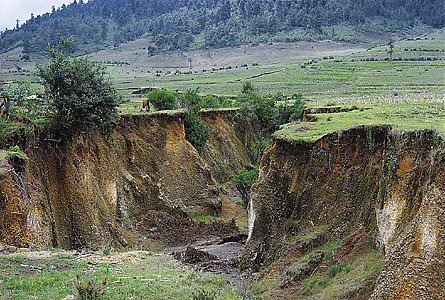
Some cities near seacoasts meet part of their water needs by desalting seawater. This process, called desalination, requires massive amounts of energy and is thus expensive. For this reason, desalination is not yet practical on a large scale. But solar energy may one day provide enough cheap power for large-scale desalination.
Many communities have problems with water pollution. The disposal of sewage, industrial chemicals, and other wastes into lakes and streams makes the water unhealthy for wildlife and human beings. Even bodies of water as large as Lake Erie have become seriously polluted. Cities and industries can reduce pollution by removing harmful substances from wastes before emptying the wastes into lakes and streams. But waste treatment is expensive, and the job of cleaning up lakes and streams will take years. See Water pollution.
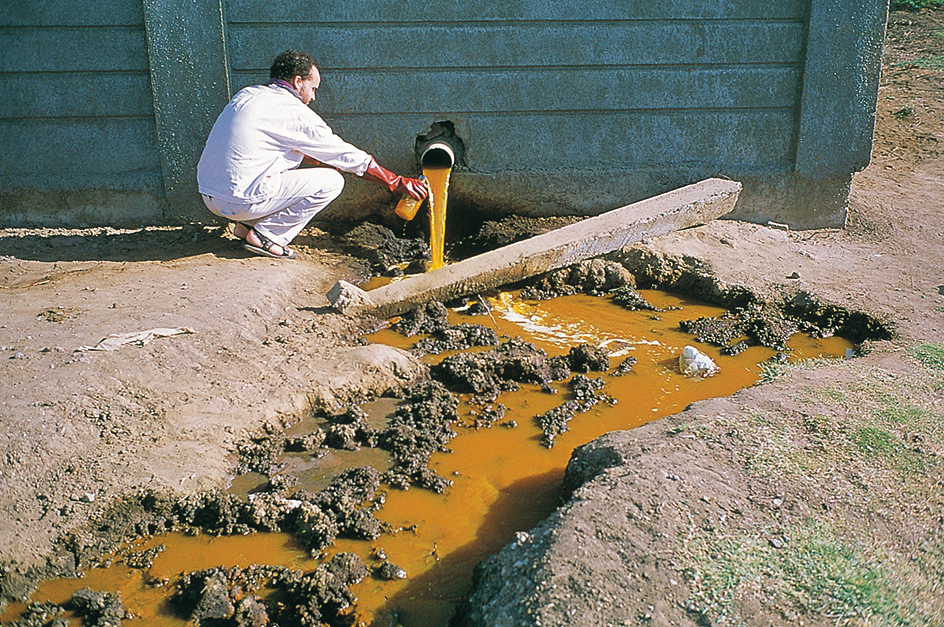
Ocean conservation.
The oceans make up more than 70 percent of Earth’s surface and provide homes to vast numbers of living species. They also help keep the world’s climate from becoming too warm. Oceans do this by storing carbon dioxide gas and preventing too much of the gas from entering the atmosphere. Atmospheric carbon dioxide warms Earth by absorbing heat from the sun.
People catch millions of tons of ocean fish and shellfish each year. This catch yields a major source of animal protein in many countries. Increasingly, people also eat such ocean species as seaweed, sea urchins, and other marine organisms. Medical science uses chemicals from some marine organisms to fight cancer and other diseases. In addition, oceans and their shores provide people with recreational activities, including boating, fishing, and swimming.
The oceans receive ever greater amounts of pollution as human population grows and shipping increases. Industrial wastes often find their way into the oceans, either directly or indirectly through rivers. Single accidents involving large oil tankers can foul an entire coastal region, killing thousands of living things. Underwater mining and excavation spills such toxic materials as heavy metals and pesticides into ocean waters. Every year, people also throw millions of tons of litter into the oceans from ships. Millions of seabirds, turtles, fish, and marine mammals die annually from becoming entangled in or consuming discarded plastic items in litter. Concentration of pollutants also renders beaches unsafe for people.
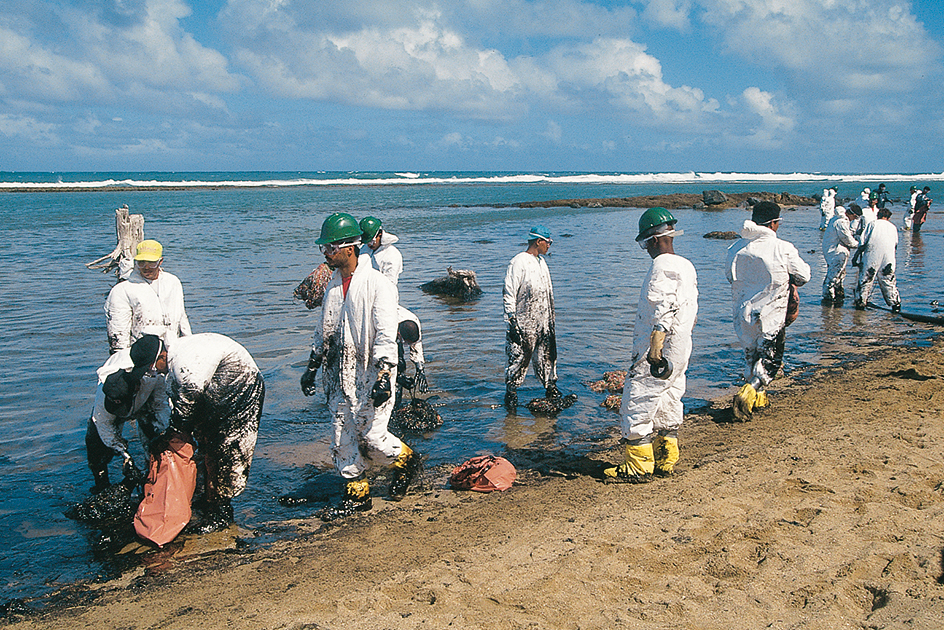
Overharvesting ranks as the other major threat to marine biodiversity. With the advent of mechanized fishing boats, overfishing increased dramatically. Many formerly productive fishing areas, including those for cod and haddock, declined greatly. Many sea creatures become bycatch—that is, species caught accidentally in nets set for other species. Endangered marine turtles, for example, are trapped in nets used to catch shrimp. Globally, overfishing and pollution have combined to cause a sharp decline in the total number of fish caught in the ocean since 1989. The total fish harvest increased, however, because of increases in aquaculture, also called fish farming.
Many international conservation problems involve marine animals and other ocean resources. International agreements and rigorously enforced limits on catch have saved certain international fishing areas, such as those for Pacific halibut. On the other hand, the commercial hunting of whales remains an international problem. Because of overhunting, several species of whales verge on extinction. The International Whaling Commission (IWC), an organization devoted to conserving whales, recommends that all nations should completely stop commercial whale hunting. But not every country has agreed with this recommendation.
Soil conservation.
Soil is essential for the growth of plants, which in turn provide food for human beings and other animals. Soil consists of particles of minerals and organic matter. The minerals in soil form from rocks and similar materials that are broken up into smaller particles by physical and chemical processes called weathering. The organic matter in soil consists of animal, plant, fungal, and microbial matter in various stages of decay. Organisms called decomposers break down the organic matter, eventually forming a stable material called humus.
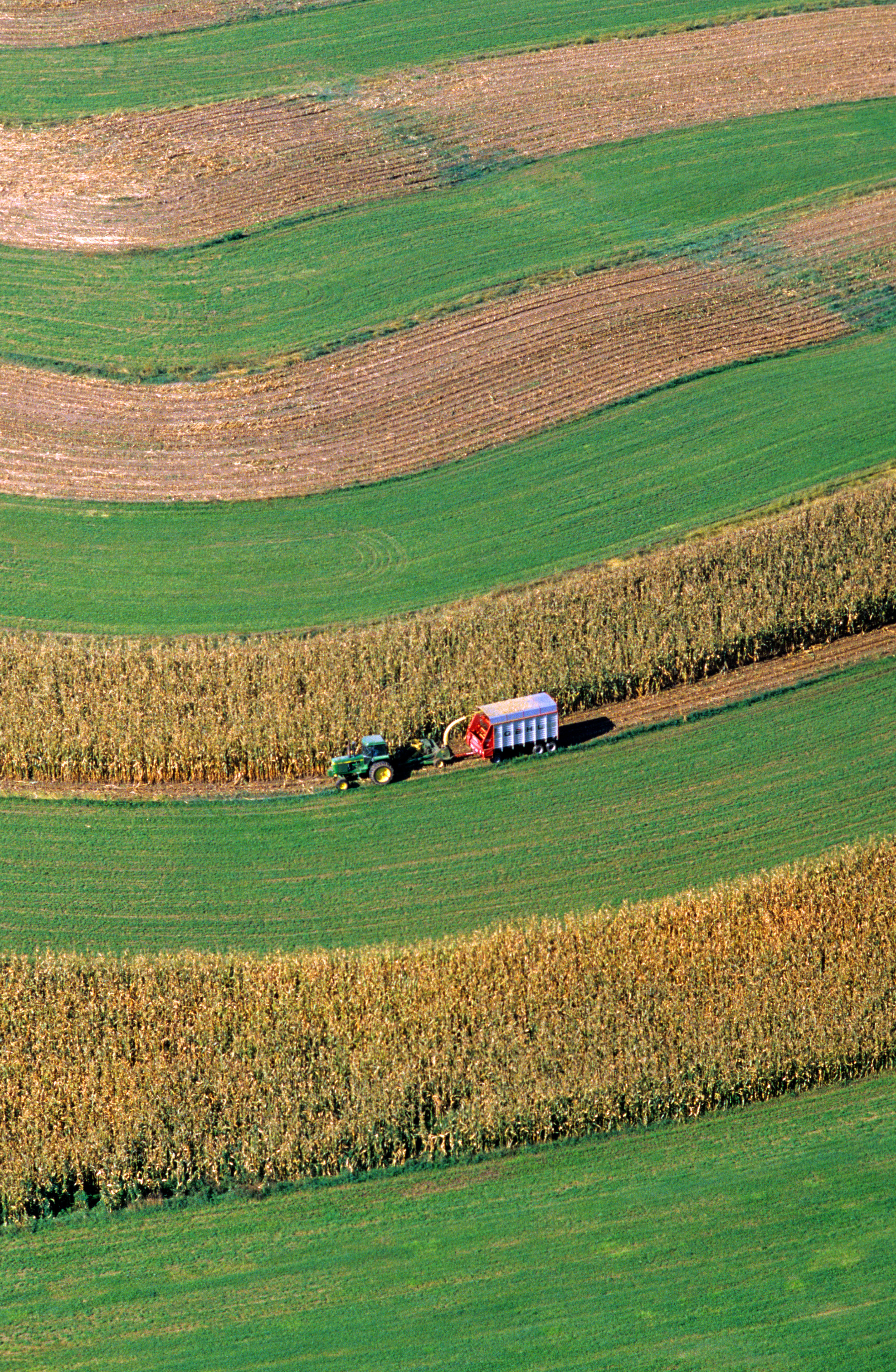
The thin layer of fertile soil that covers much of the land was formed by natural processes over thousands of years. But in many areas, careless human practices have destroyed the soil in just a few years.
Rain, wind, and other natural forces gradually wear away the soil. This process, called erosion, normally occurs slowly. But people have greatly increased the rate of soil erosion by removing natural vegetation to clear land for construction projects, mines, or farmland. Plants protect soil from rain and wind. Their roots form an underground network that holds soil in place. Plants also absorb some rain water so that less runs off the land. Thus, fewer soil particles are washed away.
Soil erosion has long been a major conservation problem, especially on croplands. Much of the soil eroded each year ends up in lakes, streams, and rivers.
Farmers can reduce soil erosion by planting trees and leaving patches of natural vegetation between their fields and on other unplowed areas. The trees serve as windbreaks, and the plant cover slows the runoff of rain water. Many farmers also practice such soil conservation methods as contour plowing, strip cropping, terracing, and minimum tillage.
Contour plowing is practiced on sloping land. Farmers plow across a slope, instead of up and down. The plowed soil forms ridges across the slope. The ridges help slow the flow of rain water.
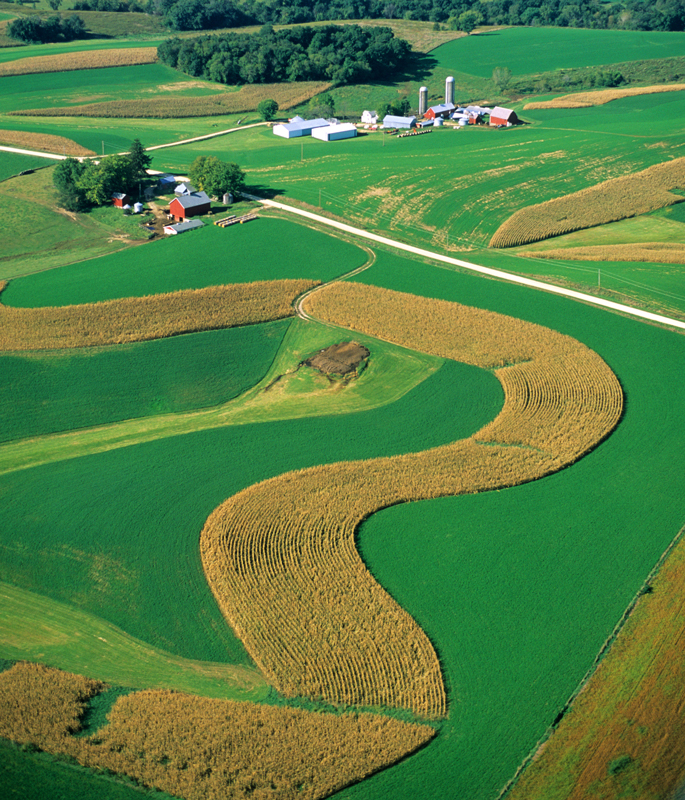
Strip cropping also helps slow the flow of rain water down a slope. Farmers plant grass, clover, or other close-growing plants in strips between bands of corn, wheat, or other grain crops. Grass and clover hold water and protect the soil better than grain crops do.
Terracing helps prevent soil erosion on hillsides. Farmers build wide, flat rows called terraces on the hillsides. A terraced hillside resembles a large staircase. The terraces hold rain water and so prevent it from washing down the hillside and forming gullies.
Minimum tillage, also called conservation tillage, consists of several methods of reducing the number of times a field must be tilled. Normally, farmers till their fields three or more times each growing season. One form of minimum tillage is called zero-tillage or no-till. After harvesting a crop, farmers leave the residues (remains) from the crop on the field as a covering for the soil, instead of plowing them under. During the next planting, the farmer prepares the seedbed with a device that leaves the residues between the crop rows. Zero-tillage not only provides cover for the soil but also conserves tractor fuel. 
Another major conservation problem on farmlands is declining soil fertility, which is caused partly by planting the same crop in a field year after year. Corn, wheat, and other grain crops drain the soil of an essential chemical called nitrogen if they are grown on the same field for several years. Farmers can maintain the fertility of the soil by practicing crop rotation, in which crops are alternated from year to year. The rotation crop is usually a legume, such as alfalfa or soybeans. Unlike corn and wheat, legumes restore nitrogen to the soil.
Some farmers add plant remains or manure (animal wastes) to their fields to enrich the soil. Many use chemical fertilizers for this purpose. However, excessive use of some chemical fertilizers may decrease the ability of decomposers to produce nutrients naturally. As a result, the soil may gradually harden and lose much of its ability to absorb rain water. The soil then erodes more easily. In addition, the chemicals from fertilizers may wash out of the soil and enter lakes, streams, and even wells, polluting the water. Excessive use of pesticides causes similar problems.
A common problem on irrigated farmland is the build-up of various chemical salts in the soil. Most irrigation water contains small amounts of these salts. In time, the salts accumulate in the soil and may reduce plant growth and ruin cropland.
Conservation of grazing lands.
Grazing lands, also called ranges, are grass-covered areas too dry to support farms or forests. These lands provide homes for many wild animals, including pronghorns and mule deer. Numerous grasses and such flowering plants as goldenrods and sunflowers grow there. Ranges also provide pasture for cattle, horses, and sheep. Some of the world’s largest grazing lands lie in western North America, southern South America, and Australia.
The chief conservation problem on ranges is overgrazing, which results when too many animals graze an area or when the animals stay in one place too long. The grasses then die and are replaced by weeds and poisonous plants, which provide poor pasture for livestock.
Overgrazing also results in increased runoff of water, which causes soil erosion. Overgrazing also ruins wildlife habitats. For example, it often occurs on the fertile areas that border a stream. Livestock trample on stream banks and kill plant life. This results in increased erosion along the stream bank and may cause the stream to become too muddy to support fish and other aquatic life.
Grazing lands, many of which are owned by national governments, must be carefully managed to ensure a continuous supply of forage (plant food) for wildlife and for livestock. To prevent overgrazing, range conservationists must determine the carrying capacity of the land. The carrying capacity is the largest number of animals that an area of land can support without destruction of plant life. Range conservationists limit the number of livestock on a range so that the carrying capacity is not exceeded. Livestock managers must move the herds from time to time so that the grasses can regrow.
To improve the vegetation on grazed lands, range managers sometimes practice prescribed burning. That is, they set fires to help control brush and poisonous plants. When properly controlled, such burning will not harm native plants. Many of these native plants have become adapted to surviving, and even flourishing, in areas with frequent, low-intensity fires. Herbicides can also eliminate undesirable plants. But many conservationists oppose the use of chemical herbicides because the chemicals in them may harm animals.
Another problem on grazing lands is the control of such animals as bobcats, coyotes, and mountain lions, which sometimes prey on livestock. Many ranchers want these predators killed or removed. But most conservationists want to protect the animals.
Forest conservation.
Forests serve as sources of timber and as habitats for many animals and plants. They also provide recreational areas for campers, hikers, and hunters. In addition, forests are important as watersheds. They absorb large amounts of rain water, preventing the rapid runoff of water that causes erosion and flooding.
Many forests are owned by national governments. In the United States, the U.S. Forest Service manages these national forests under the principle of multiple use, which means they provide several benefits at once. For example, the Forest Service manages woodlands to furnish timber, shelter wildlife, provide recreational space, and conserve water. Timber production, however, may conflict with the need to conserve wildlife, water, and other resources. Also, the use of prescribed burning in forests, often done to maintain native species that are adapted to frequent fires, can conflict with concern over smoke and the danger of fire in adjacent areas.
The conservation of forests used to produce timber depends on replacing trees that are cut down so that the forest has a sustained yield. Sustained yield is an approximate balance between the annual harvest and the annual growth of wood. The Forestry article in World Book describes methods of harvesting trees to achieve sustained yield. It also describes how forest resources other than trees are managed and how forests are protected from diseases and insect pests.
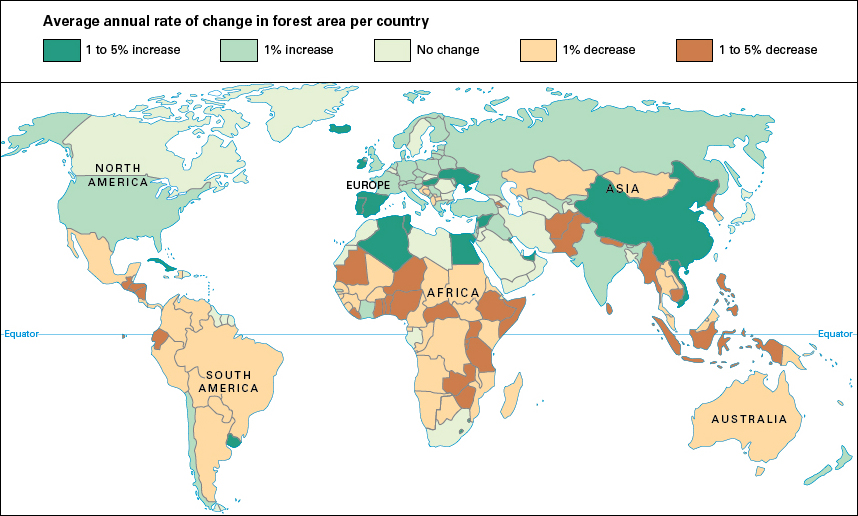
For centuries, people have cut down forests to clear land for farms and cities. Today, forest destruction in the United States and other industrialized countries has slowed, though many forest-dwelling species remain threatened. In many other countries, however, especially those in tropical areas, forest destruction continues at a rapid pace. The reduction of tropical rain forests has put at risk the survival of the richest and most diverse ecosystems in the world.
Mineral conservation.
Minerals include such substances as copper, gold, iron, lead, and salt. Industries use minerals to manufacture countless products.
The use of many minerals has increased greatly throughout the world. The use of aluminum, for example, has increased about five times since 1960. The use of nickel has more than doubled during this period. Some minerals, such as bauxite (the mineral from which aluminum is obtained) and salt, are plentiful. But the proved reserves of such minerals as copper, lead, nickel, and zinc may be depleted within 100 years.
Mining companies can profitably extract most minerals only where they occur in large deposits. Industries first develop the highest-grade and most easily minable ores. When these are depleted, mining companies turn to lower-grade and harder-to-mine ores. Many such deposits require advanced technology and large amounts of energy to mine. Some take so much energy to mine and refine that they cannot be profitably developed.
Deposits of minerals are unevenly distributed around the world. This uneven distribution of minerals has played a major role in history. For example, the ancient Romans battled the Celts for control of the tin mines in southern England. A desire for gold was largely responsible for the Spanish explorations and conquests of many parts of the New World.
The need for minerals continues to influence international relations today. Many countries must import large amounts of various minerals. The United States, for example, imports almost all of the sheet mica and strontium it uses. In addition, the United States imports more than half of its chromium, cobalt, fluorine, manganese, nickel, platinum, and tin.
Mining and refining minerals often destroys scenic lands and habitats for animals and plants. It can also pollute air and water. One method of copper mining, for example, leaves large open pits on the surface of the land. Fumes from copper smelters, iron and steel mills, and other refineries pollute the air and kill many plants. Some refineries discharge wastes in lakes and streams.
We can conserve minerals in a number of ways. Industries can reduce waste by using more efficient mining and processing methods. In some cases, industries can substitute plentiful materials for scarce ones. Some mineral products can be recycled. Aluminum cans are commonly recycled. Although bauxite is plentiful, it can be expensive to refine. Recycling aluminum products does not require the large amounts of electric power needed to refine bauxite. Products made from many other minerals, such as nickel, chromium, lead, copper, and zinc, can also be recycled.
Energy conservation.
All industries require energy to operate. Energy is also used in transportation and recreation. In addition, we use energy to warm and cool our homes, to cook food, to provide lighting, and to operate many appliances.
About 85 percent of the energy used throughout the world comes from oil, coal, and natural gas. These substances are called fossil fuels because they developed from fossilized remains of prehistoric plants and animals. Large deposits of fossil fuels take millions of years to form. Earth has a limited supply of fossil fuels. But the worldwide use of fossil fuels has increased steadily since 1900. As the supply dwindles, the cost of fossil fuels keeps rising.
Many nations are working to develop other sources of energy to reduce their dependence on fossil fuels. But every source of energy has some disadvantages that make its development difficult. The Energy supply article describes such sources of energy as nuclear energy, solar energy, and geothermal energy.
Until other sources of energy are further developed, nations must conserve fossil fuels to make the supply last as long as possible. Most of the responsibility for conservation rests with industrialized nations because they consume the majority of the world’s energy. The United States alone uses and produces about 15 percent of the world’s energy. Higher fuel prices and periodic fuel shortages have forced the United States and many other industrialized nations to develop better conservation programs.
Industries and individuals can conserve energy in many ways. Improved mining and manufacturing techniques can make the industrial use of fuel more efficient. Individuals can save fuel in their homes by installing insulation, which reduces the amount of fuel used for heating and air conditioning. People can set their thermostats at or below 68 °F (20 °C) in winter and at or above 78 °F (26 °C) in summer. These thermostat settings are required in most public buildings by the federal government. People can also conserve energy by using less hot water and turning off unnecessary lights. Motorists can save gasoline by driving smaller cars and by forming car pools. Much gasoline would be saved if more people used public transportation.
The development and use of energy causes many environmental problems. For example, strip mining of coal destroys plant life and exposes the land to erosion. Blowouts of offshore oil wells and leaks from tankers produce oil spills that pollute the oceans. The burning of fossil fuels pollutes the air and results in the formation of acid rain, rain and other precipitation polluted mainly by sulfuric and nitric acid. Acid rain can kill fish in lakes and streams. Sound conservation practices, such as restoring strip-mined land as closely as possible to its original condition, can help reduce environmental damage.


Urban conservation.
About 55 percent of the world’s people live in or near cities. Since the 1800’s, many cities have grown so rapidly that public services have not kept up with population increases. Cities thus have such problems as overcrowding, traffic jams, and inadequate public transportation. Most cities are also noisy and suffer from air pollution, partly because of the many motor vehicles in use. In addition, many cities lack sufficient parks and recreational facilities. The urban landscape consists largely of pavement and buildings.
Because of the drawbacks of city life, many people and businesses have moved to the suburbs. As suburbs nearest the city become crowded, people move farther and farther out, creating a condition known as urban sprawl. When businesses and upper- and middle-class people move to the suburbs, the cities lose tax money needed to maintain city services and neighborhoods. Many cities are left with a large population of poor people living in crowded, run-down housing. The hearts of many cities consist of large slum areas, a condition known as urban blight. In addition, much prime farmland has been lost to urban sprawl, and wildlife habitat has been damaged.
The goal of urban conservation is to improve the quality of life in cities and to make them more attractive and pleasant places to live. Many cities have urban renewal projects, which demolish run-down buildings and replace them with public housing or other developments. In some cities, developers restore old houses and apartment buildings instead of tearing them down. Many cities try to enhance their environments by developing strips of grass or trees called greenbelts. Some cities are trying to reduce traffic problems and air pollution by improving public transportation systems and encouraging their use. Most cities also need to develop more parks and recreational facilities.
Early history of conservation
Prehistoric times.
During early prehistoric times, there were not enough people on Earth to use a large amount of natural resources or to damage the environment significantly. Early prehistoric people thus had little need to practice conservation.
About 11/2 million years ago, people learned how to make fire. They built fires to cook food, to keep warm, and, later, to kill animals. The fires drove the animals over cliffs or into traps. In addition, people have used fire for thousands of years to clear forests and encourage the growth of food plants. Some scientists believe Africa’s savannas (grasslands with widely scattered trees and shrubs) resulted from burning of forests.
The rise of civilization.
A number of civilizations arose around the Mediterranean Sea from at least 3500 B.C. to the A.D. 400’s. Many people of the region tended large flocks of sheep and goats, which severely overgrazed the land. In time, the shallow soils of the region eroded. The grassy pastures turned to wastelands, and large areas became desertlike. Much of the land in the Mediterranean region remains in poor condition today.
Although ancient civilizations in the Mediterranean region damaged the land, they also developed some conservation practices to keep farmlands productive. For example, the Phoenicians, whose culture peaked about 1000 B.C., developed techniques of terracing hillsides to prevent soil erosion. The Greeks introduced the practice of crop rotation sometime before the 300’s B.C. The Romans, whose empire reached its greatest size in the A.D. 100’s, brought knowledge about irrigation practices to the lands they conquered. Many conservation techniques later spread to northern Europe and formed the basis for wise land management there.
The Industrial Revolution
was a period during the 1700’s and early 1800’s when industrialization developed in western Europe and the northeastern United States. During this period, power-driven machines were invented and factories were organized. Machine-made goods produced in factories replaced handmade goods produced at home. Manufacturing, mining, and construction industries expanded rapidly. The Industrial Revolution resulted in increased production of many kinds of goods. It changed most Western nations from rural, agricultural societies to urban, industrial societies. It also brought many environmental problems.
During the Industrial Revolution, burning coal provided power for factories and to heat homes. As a result, smoke and soot polluted the air over London and other industrial cities. Wastes from iron smelting and other industries were dumped into lakes and rivers. The crowded cities also discharged large amounts of raw sewage into the water. Power-driven machines and improved tools increased people’s ability to change the environment. They dammed rivers, cleared thick forests, turned vast prairies into cropland, and drained marshes.
During and after the Industrial Revolution, wildlife and native plant populations decreased rapidly. With improved guns and traps, commercial hunters killed many animals. As more and more people traveled to new lands, they brought animals, plants, and disease organisms that harmed native species, especially on islands. Rats escaped from ships and preyed on birds and their eggs. Goats, sheep, and other livestock overgrazed land, destroying the food supply of wild animals. Introduced Asian and European plants replaced native American grasses that could not tolerate overgrazing by livestock. Wildlife habitats were destroyed as people cleared forests and drained marshes. Habitat destruction dramatically reduced wildlife populations, and it continues to be the major threat to wildlife. Since 1600, more than 400 species of animals have become extinct, and many more have dwindled in number.
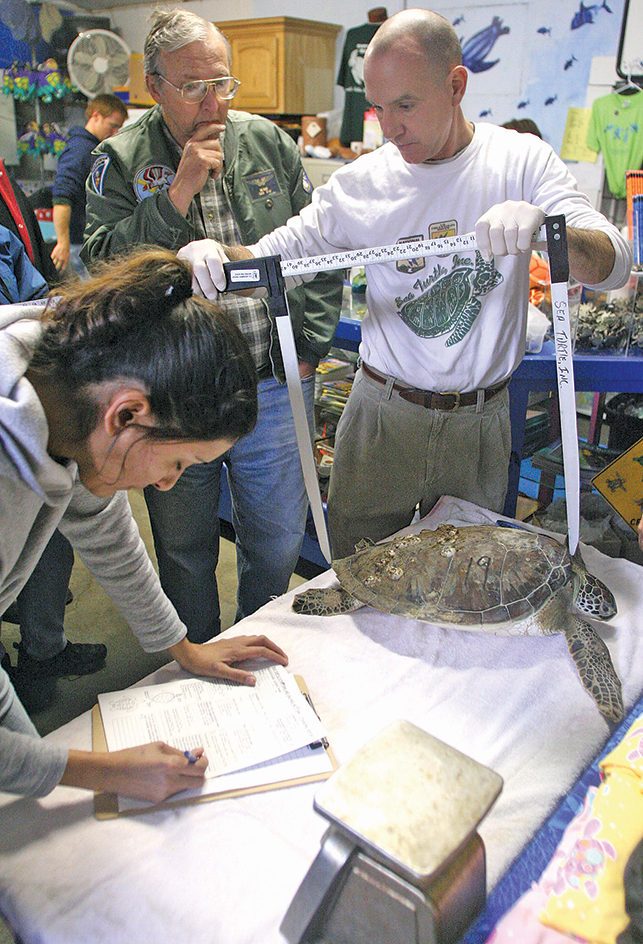
Conservation in the United States
Early conservation problems.
When the European settlers came to North America, they found a vast land rich in natural resources. But they had to struggle to provide food and shelter for themselves. They regarded nature as a force that they had to fight and conquer. They cleared forests to provide logs for cabins and to establish farms. But most settlers did not follow sound agricultural practices. When the soil eroded or lost its fertility, they moved on to new lands. The settlers had little concern for conservation because they thought the frontier extended so far that it would last forever. Although many colonies passed hunting laws to conserve game animals, the laws were not well enforced.
In the early 1800’s, such explorers as Meriwether Lewis and William Clark helped open up the western United States. Many people believed that an unlimited supply of natural resources awaited use by the young nation. Trappers came to hunt animals for their furs. Beaver skins were especially valuable during the 1800’s because men’s hats were made from the fur. Trappers believed the supply of beavers was inexhaustible, and they trapped too many of the animals. They then had to travel farther west to find more beavers.
The millions of bison (American buffalo) that roamed the plains represented another valuable resource. Their hides made warm robes, and their bones were used in fertilizer. During the late 1800’s, commercial hunters slaughtered millions of bison. By 1889, fewer than 1,000 bison could be found alive in the United States. Only the enforcement of game laws and other protective measures saved the bison from extinction. By 2000, the population had grown to about 300,000.
Such careless misuse of many of the country’s natural resources aroused some people to the need for conservation. The first national park in the world—Yellowstone National Park—was established in 1872 to preserve the area’s unusual natural features and scenic beauty. American naturalists, including John James Audubon, Henry David Thoreau, George Perkins Marsh, and John Muir, promoted conservation measures. Audubon’s paintings of birds and other animals aroused public interest in the nation’s wildlife. In his book Walden (1854), Thoreau discussed his belief that people should live in harmony with nature. Marsh wrote Man and Nature (1864), one of the first textbooks to discuss ecology and conservation. It was later retitled The Earth as Modified by Human Nature. Muir influenced Congress to establish Sequoia National Park and Yosemite National Park.
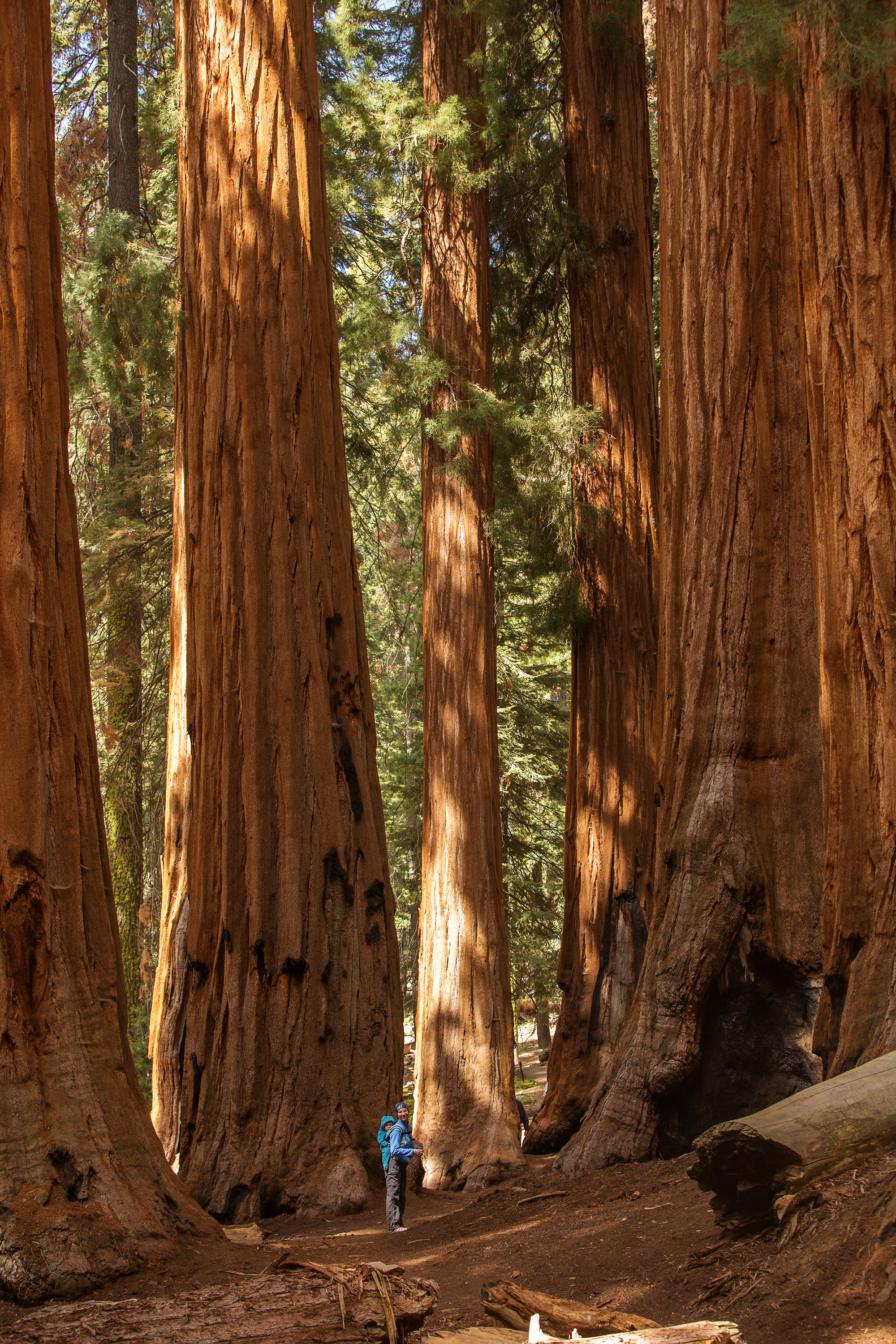
The rise of the conservation movement.
During the early 1900’s, conservation began to develop as a national movement. Its dominant theme was the wise use of natural resources, including plants and animals, for human benefit. The federal government took many steps to preserve these resources, and conservationists sought to avoid waste at all cost. Throughout this period, however, people considered plants and animals primarily as instruments to increase human welfare, rather than as independent species with their own inherent rights.
Congress passed a conservation law called the Lacey Bird and Game Act of 1900. The act, named for its sponsor, Representative John F. Lacey of Iowa, made it a federal crime to transport illegally killed animals across state borders. It also set controls on the trade in bird feathers, the importation of animals, and the commercial killing of game.
President Theodore Roosevelt made many important contributions to the conservation movement. In 1903, he established the first federal wildlife refuge at Pelican Island, Florida. At the urging of Gifford Pinchot, the head of the U.S. Forest Service, and other conservation leaders, Roosevelt added more than 140 million acres (57 million hectares) to the nation’s forest reserves.

In 1908, President Roosevelt brought together governors, federal officials, scientists, business executives, and conservation leaders for a White House conference to adopt national policies for the use of natural resources. The conference approved the principle of multiple use in the management of national forests and parks. The principle of multiple use provided that public lands be managed to serve many benefits. It thus protected these lands from being used solely or primarily for commercial development.
The 1908 conference had far-reaching effects. Within a few years, 41 governors established conservation commissions in their states. The National Conservation Commission was formed, and Gifford Pinchot became its chairman. The commission made the first inventory of the nation’s natural resources. Based on the commission’s recommendations, President Roosevelt later set aside some public lands as natural resource reserves to be used for scientific studies. In 1911, Congress passed the Weeks Act, names for its sponsor, Representative John W. Weeks of Massachusetts. The Weeks Act formally established the policy of multiple use in the management of national forests and other public lands.
Many conservation projects were begun during the Great Depression of the 1930’s, partly to provide jobs for the unemployed. In 1933, President Franklin Roosevelt formed the Civilian Conservation Corps (CCC). Workers in the CCC planted trees, fought forest fires, made paths in national forests and parks, and built dams to control floods. Also in 1933, Congress established the Tennessee Valley Authority (TVA) to conserve the resources of the Tennessee Valley. The region suffered from serious soil erosion and from flooding. The TVA planted trees to restore the region’s forests. It built several large dams to control flooding and to provide cheap electric power to rural areas.
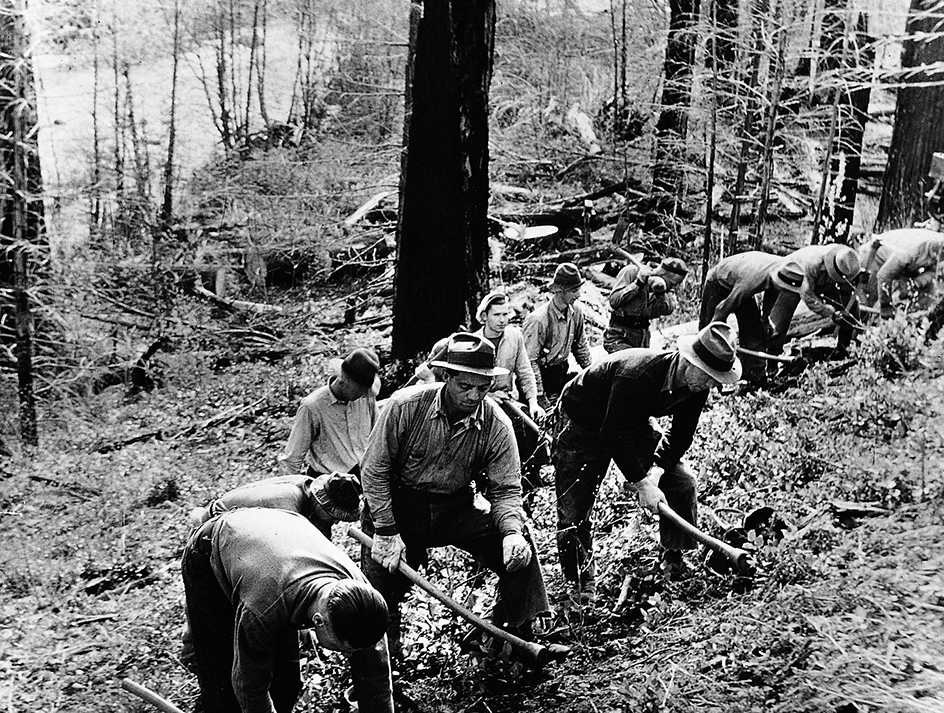
The tragedy of the Dust Bowl in the early 1930’s dramatized the need for soil conservation in the United States. The Dust Bowl was the name given to parts of the Great Plains where windstorms carried away the topsoil. A severe drought and poor farming and ranching practices had damaged the land. The Dust Bowl covered about 50 million acres (20 million hectares). Many farm families suffered great hardships and had to leave the area. In 1935, President Franklin D. Roosevelt established the Soil Conservation Service to promote soil conservation practices among farmers and ranchers.
In 1937, Congress passed the Federal Aid in Wildlife Restoration Act, which levied a federal tax on sporting arms and ammunition. The federal government distributes tax money to the states for use in wildlife management and research.
Aldo Leopold, an American naturalist, was one of the most influential leaders in the conservation movement during the mid-1900’s. He wrote Game Management (1933), the first textbook on wildlife management. Leopold promoted the active management of wildlife.
Renewed interest in conservation.
The 1960’s and 1970’s brought renewed interest in conservation. Scientific discoveries about various forms of pollution had a major impact on the conservation movement during the 1960’s and 1970’s. Rachel Carson, a marine biologist, wrote about the destructive effects of DDT and other pesticides in her book Silent Spring (1962). She pointed out that pesticides poison the food supply of wild animals and could also contaminate the food supply of human beings. Beginning in 1972, DDT was gradually phased out.
Publicity about DDT and other pollutants led to increased public concern about environmental health. Membership in conservation organizations rose, and people urged Congress to pass laws to protect the health of the environment.
Congress passed the National Environmental Policy Act in 1969. The act requires that a study called an environmental assessment be prepared for all federally funded construction projects or other activities that might affect the environment.
The act also requires preparation of an environmental impact statement if experts review the assessment and find the project or activity to have environmental significance. Environmental impact statements are reports that describe how proposed highways, dams, power plants, or other construction projects would affect the environment. Environmental impact statements can be used in court to challenge projects that may be environmentally harmful. In some cases, a court may order that projects be stopped or redesigned to minimize environmental damage.
In 1970, the Environmental Protection Agency (EPA) was established. The EPA sets and enforces pollution control standards and assists state and local governments in pollution control.
In 1973, Congress passed the Endangered Species Act, which provided more protection for threatened and endangered species of wildlife than earlier laws had. The act prohibits federal projects that would destroy the habitat of an endangered species. In 1978, Congress amended the act to allow exemption of certain projects that serve the best interests of a region or of the nation. In 1995, the Supreme Court of the United States ruled that deliberate destruction of habitat of an endangered species is also prohibited on private property.
During the 1970’s, the United States experienced periodic fuel shortages, which led to higher prices for gasoline and home heating fuel. The fuel shortages helped dramatize the need for energy conservation. In 1977, Congress created the Department of Energy, which was given responsibility to develop and promote new sources of energy and ways to save existing supplies.
One project called for the production of synthetic fuels, or fuels that can be substituted for crude oil and natural gas. Synthetic fuels, also called synfuels, are gases or liquids produced from coal, oil shale (a rock that yields oil when heated), bituminous sands (sands that also contain a substance from which oil can be obtained), and biomass (organic matter, such as wood, garbage, and animal manure). Synfuels are expensive to make and not widely used. But if oil prices rise greatly, synfuels may become an important energy alternative.
Beginning in the 1970’s, private conservation organizations, such as the Nature Conservancy, the World Wildlife Fund, and the Environmental Defense Fund, became more prominent. These organizations publicize the plight of endangered species and the scale of habitat destruction. They also promote conservation legislation in both federal and state governments.
Recent developments.
In 1993, Congress established the Office on Environmental Policy. It coordinates environmental policy within the federal government. Such policy increasingly attempts to manage entire ecosystems for the benefit of all the species within them, rather than producing individual management plans for each species as it becomes threatened.
Since the late 1900’s, a different kind of conservation philosophy has begun to emerge. Many environmentalists and philosophers now believe that nonhuman species have inherent rights of existence. This movement, foreshadowed in the writings of Henry David Thoreau and John Muir, seeks to give conservation a deeper respect for nature and to make such respect the cornerstone of conservation laws.
Conservation around the world
Many countries have conservation problems similar to those of the United States. Almost all industrialized nations, for example, face such problems as air and water pollution, urban crowding, and shortages of fossil fuels. This section chiefly deals with land management and wildlife conservation in Canada, Latin America, Europe, Asia, Australia, and Africa. It also discusses international conservation problems.
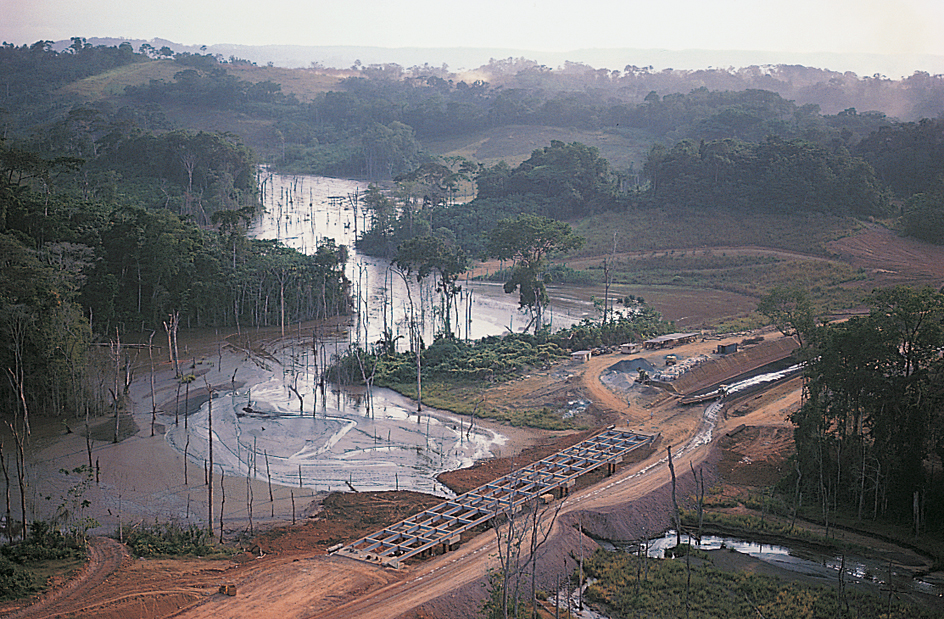
Canada
has a large land area and a fairly small population. Most of the people live in the southern part of the country. Canada’s interior is only sparsely settled. The country has bountiful supplies of natural resources. Evergreen forests, prairies, and tundra cover much of the country. Canada has many rivers and lakes, most of which are not seriously polluted. The country also has rich deposits of copper, uranium, zinc, and other minerals, many of which lie in remote areas of the interior.
Large areas of Canada remain undeveloped. Thus, many kinds of wildlife are as abundant as they were before the country was settled by Europeans. Canada has plans to develop some of the mineral resources of its interior, however. Unless such development is carefully planned and managed, the growth of the mining industry may result in destruction of wildlife habitats and a decrease in animal populations.
The drainage of wetlands in agricultural areas of Alberta, Saskatchewan, and western Manitoba has destroyed many wildlife habitats. The prairies of these provinces have fertile soil and are intensively farmed to produce cereal grains. Some people want to drain the remaining prairie wetlands, called prairie potholes, to increase crop production. But conservationists do not want the wetlands drained because they are important breeding places for ducks and other migratory birds. The wetlands also store runoff water and so help prevent flooding.
Many Canadian forests have been heavily logged. The scale of Canadian deforestation (destruction of forests) now compares to that in the United States. Many people in British Columbia and other provinces are greatly concerned about the destruction of original forests and the common practice of clearcutting (removing all trees) over large areas.
Canada and the United States have long worked together to protect waterfowl and other wild animals that cross their border. The two countries have treaties that protect migratory birds and other wildlife.
Other issues are not settled, however. Canadians have called for action to prevent the production of harmful chemicals that cross the border in the smoke and other exhausts from U.S. factories. The chemicals mix with water vapor in the atmosphere to form sulfuric and nitric acids. These acids pollute rain, sleet, and snow. The polluted precipitation, commonly called acid rain, kills fish and other wildlife in and around many Canadian ponds and lakes. Most conservationists also believe that acid rain may damage northern forests. They argue that acid rain stops leaves from producing food for trees. Acid rain is thus a major conservation issue in Canada because of its destruction to the environment and the economic hardships it may cause.
Latin America
has vast tropical rain forests, where many unique species of plants and animals live. It also has valuable mineral deposits. Mexico, for example, has large deposits of petroleum and natural gas.
Most of Latin America was colonized by the Spanish, who were primarily interested in obtaining gold and other raw materials from the New World. The Spanish generally restricted their settlements to mining centers and areas that had a favorable climate. Thus, until recently, much of Latin America consisted of wilderness areas that were largely undisturbed, though the land around most cities was severely damaged. Parts of Mexico and Central America, however, were more extensively settled and suffered from widespread forest destruction, overgrazing, and soil erosion.
Many nations of Latin America have a rapidly growing population, and most of the people are poor. To raise living standards, a number of countries have begun programs to expand industry and agriculture. The tropical rain forests contain commercially valuable trees, and timber production has increased. Many countries have cut through forests to build roads to reach remote areas where mineral deposits lie. In addition, farmers have cleared forests to provide land for growing crops. The soil of the tropical rain forests, however, does not generally make good farmland. Most tropical soils are not fertile, and few Latin American farmers can afford the large amounts of fertilizers needed to enrich the soil. In addition, tropical soils may harden when they are exposed to direct sunlight. They then become useless for growing crops. As a result, the farmers remove more trees each year to provide new cropland.
The expansion of industry and agriculture in Latin America has thus resulted in destruction of forests and wildlife habitats. Many countries have established national parks to conserve forests and wildlife. But in many cases, the parks are not well protected.
Europe.
Much of the land in southern Europe has been severely damaged by the destruction of forests and by overgrazing of livestock. The soil has eroded from hillsides, and the vegetation on grasslands is sparse and of poor quality. Many countries of southern Europe have begun programs to replant trees on hillsides and to improve vegetation on grasslands.
In northern Europe, forests still cover much of the land, and environmental damage is not as great as it is in southern Europe. Northern Europeans were among the first people to recognize the environmental value of trees, and they developed the science of forestry. The forests of northern Europe contain only a few species of trees and a small variety of endangered animals and plants. Thus foresters can clearcut large areas of these forests and still safely replenish them by replanting the same few tree species. Such forestry practices would not work well in environments with greater biodiversity. Northern Europeans also have practiced wildlife conservation for many years. In some countries, much of the land is privately owned, and the landowners take responsibility for protecting wildlife. Most of the countries have also established nature reserves.
Russia, part of which is in Europe and part in Asia, has the world’s largest forest reserves. Russia makes considerable commercial use of its forests for logging, and of its wildlife for food and manufactured goods. But the country has also worked to conserve its forests from too much logging and to protect polar bears and other wildlife resources.
Asia
has more people than any other continent. Many Asian countries have difficulty conserving natural resources because the land must support so many people.
In Southeast Asia, many forests have been cut down to produce timber and to clear land for farms and industries. The destruction of forests has reduced the living space of wildlife. Much of Asia’s wildlife is also threatened by overhunting. Many people kill animals for food or hunt them to sell to zoos, medical researchers, and pet traders. Because of habitat destruction and overhunting, many large Asian animals, including elephants, rhinoceroses, and tigers, have become endangered.

In China, people have cut down most of the forests for wood, which has caused serious soil erosion. The soil is deposited in rivers and streams, which lowers the quality of the water. The Huang He, or Yellow River, is so named because the light-colored soil gives the water a yellowish color. The soil has also raised the riverbed. As a result, the Huang He often floods, causing great property damage and loss of life along its banks.
In the Middle East, deserts cover much of the land. With irrigation, however, farmers have turned some areas into productive croplands. Israel is especially well known for its irrigation efforts. Some farmland in Israel and a number of other countries, however, has been seriously damaged by the build-up of salts in the soil, a common problem on irrigated land.
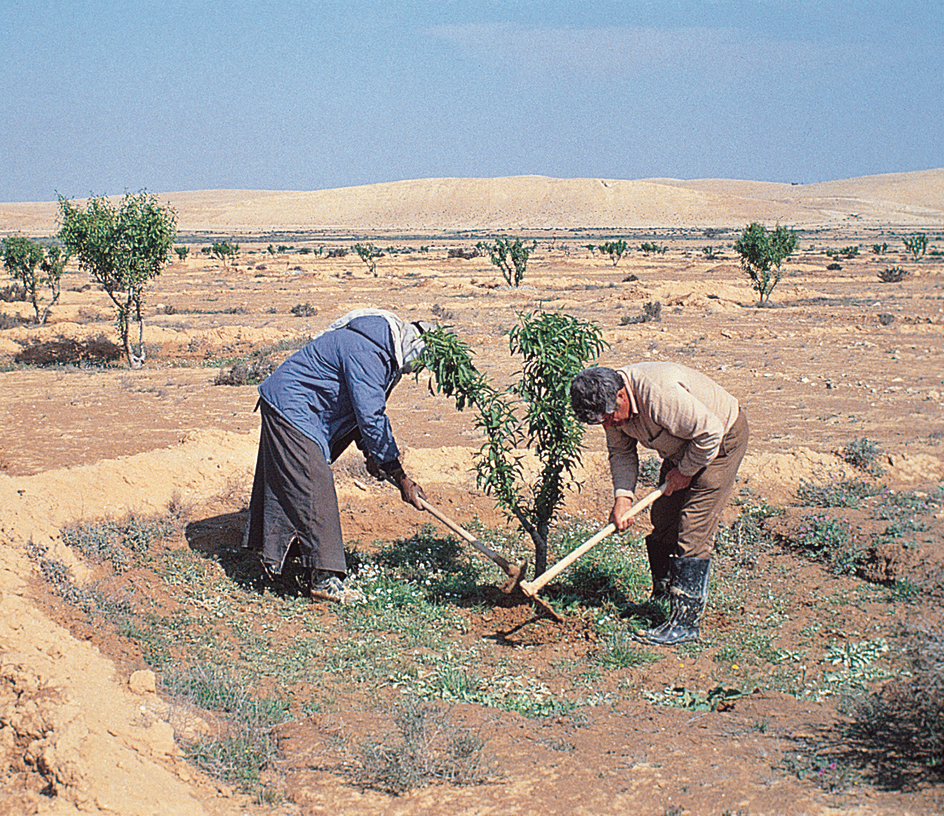
Australia.
Ranges cover much of Australia, and sheep ranching is widespread. In many dry regions, overgrazing has seriously damaged the vegetation.
Australia’s wildlife includes numerous species of mammals called marsupials. Kangaroos and some other marsupials are grazing animals. They thus compete for food, water, and living space with the sheep that graze on the ranges. Ranchers have killed many kangaroos because they believe the animals reduce the grass supply for sheep. Hunters have also killed many kangaroos for their hides and to sell their meat. Because the Australian government feared that kangaroos might become extinct, it banned the sale of live kangaroos and of kangaroo hides and meat to other countries in 1973.
The control of predators is a major problem. On ranges, wild dogs called dingoes prey on the sheep. Some ranchers have tried to kill the dingoes with poisons. But many conservationists oppose poisoning because they believe it also kills other species of wild animals. Introduced red foxes and cats have devastated populations of native marsupials in much of Australia.
The introduction of European rabbits into the wild in Australia during the 1850’s created a major conservation problem that continues today. In Australia, these rabbits had no natural predators or diseases to limit their population, and their numbers soared. The rabbits consumed so much forage that many sheep ranchers were forced to reduce the size of their flocks. After other control measures failed, Australian scientists succeeded in reducing the rabbit population in the 1950’s by exposing the animals to a viral disease called myxomatosis, which affects only rabbits. Later generations of rabbits developed resistance to this virus, however. The rabbits again grew in numbers and again became a problem. In the mid-1990’s, scientists accidentally released a new viral disease called calicivirus that has helped limit the number of rabbits.
Africa.
In northern Africa, many people live by tending herds of sheep and goats. Along the southern edge of the Sahara, overgrazing has severely damaged much of the land. In these arid areas, the sandy soil quickly erodes after the protective covering of vegetation has been removed. The land then becomes desertlike. Overgrazing and droughts have contributed to the expansion of the Sahara, which advances along parts of its southern border up to 30 miles (48 kilometers) a year.
In central and southern Africa, the destruction of habitats and overhunting have reduced wildlife populations. People have overhunted many species of African wildlife because they prize the animals as trophies and as sources of valuable products. Elephant tusks provide valuable ivory. Craftworkers use much of the ivory to make beads and bracelets. Fur traders prize leopards for their hides, which are used to make expensive fur coats. Many African nations have passed strict hunting laws, but the laws are difficult to enforce in remote areas. The commercial value of elephant tusks, leopard hides, and other animal products on the world market makes poaching (illegal hunting) extremely profitable. In 1989, many nations agreed to end the sale of ivory. But some conservationists believe that poaching will continue as long as people buy ivory. To help protect their wildlife, many African nations have established large national parks and nature preserves.
International problems.
The United Nations, the IUCN (International Union for the Conservation of Nature and Natural Resources), and other organizations support worldwide conservation programs. The IUCN gathers information on the world’s endangered wildlife and publishes the data in its Red Data Book. Other international conservation organizations, such as the International Whaling Commission, work to conserve animal, mineral, and other resources in the oceans.
Conservationists are also concerned about the growing level of carbon dioxide in the atmosphere. Carbon dioxide traps heat in a process called the greenhouse effect. The amount of carbon dioxide in the atmosphere is increasing chiefly because of the burning of such fossil fuels as coal, oil, and natural gas. The destruction of forests, which absorb carbon dioxide from the atmosphere, also contributes to an increase in this gas. Some scientists believe significant global warming may alter Earth’s ecological balance and cause great changes in rainfall patterns and ocean levels. Conservationists are working to replant forests and decrease the use of fossil fuels.
Careers in conservation
Most careers in conservation require a college degree. Many people with an interest in the outdoors pursue a career in forestry, wildlife ecology, or soil conservation. Others work in conservation education, urban planning, or various other fields.
Conservation biologists work for government agencies, private conservation organizations, and universities. They study the full range of ways in which living species are threatened, as well as the status of biodiversity worldwide. They also work toward the protection, management, and restoration of biodiversity.
Forestry is one of the oldest conservation professions. Foresters are employed by national and local governments, as well as by logging companies. Some foresters specialize in silviculture, the science of growing trees. Others work in such areas as watershed management, insect and disease control, or timber harvesting.
Wildlife biologists may work in national wildlife refuges, nature reserves, rangelands, forest reserves, fish hatcheries, or government agencies responsible for wildlife management. In addition, private consulting firms employ wildlife biologists to prepare environmental impact statements. Many land development companies employ people with wildlife management training.
Soil conservationists are employed by various government agencies to promote the wise management of plant, soil, and water resources. Many agricultural specialties, including agronomy, range ecology, and soil physics, deal with resource management.
Urban planners and urban geographers work with regional or city planning agencies. These agencies work to improve city services. They also plan urban renewal projects and other city development programs.
Geologists, civil engineers, and scientists in many fields contribute to conservation. They conduct research and seek solutions to many conservation problems, including pollution control and the development of new energy sources.
